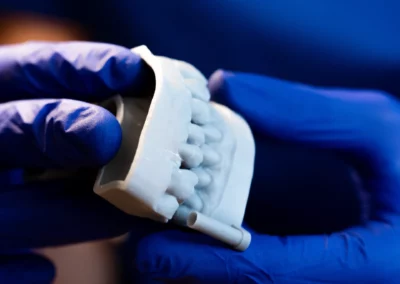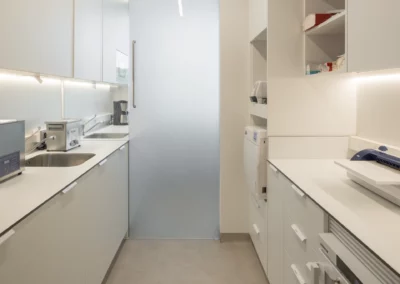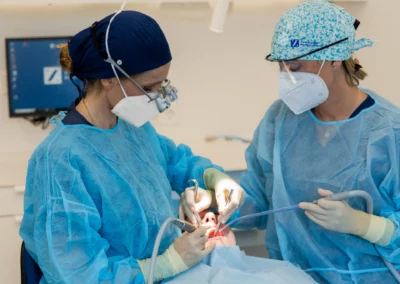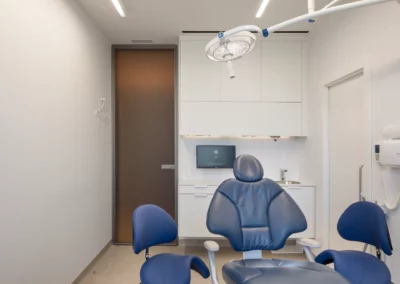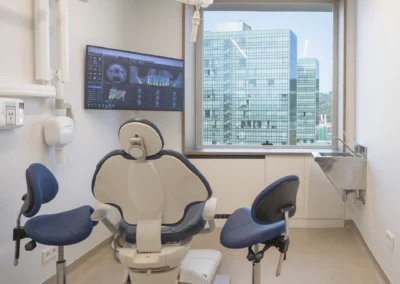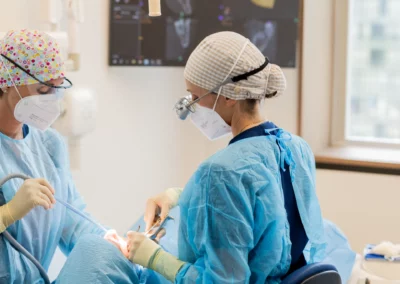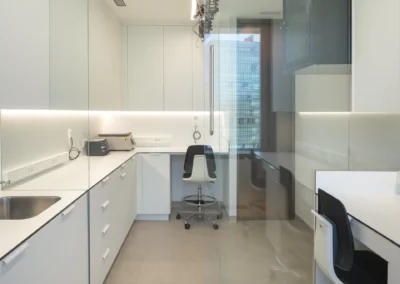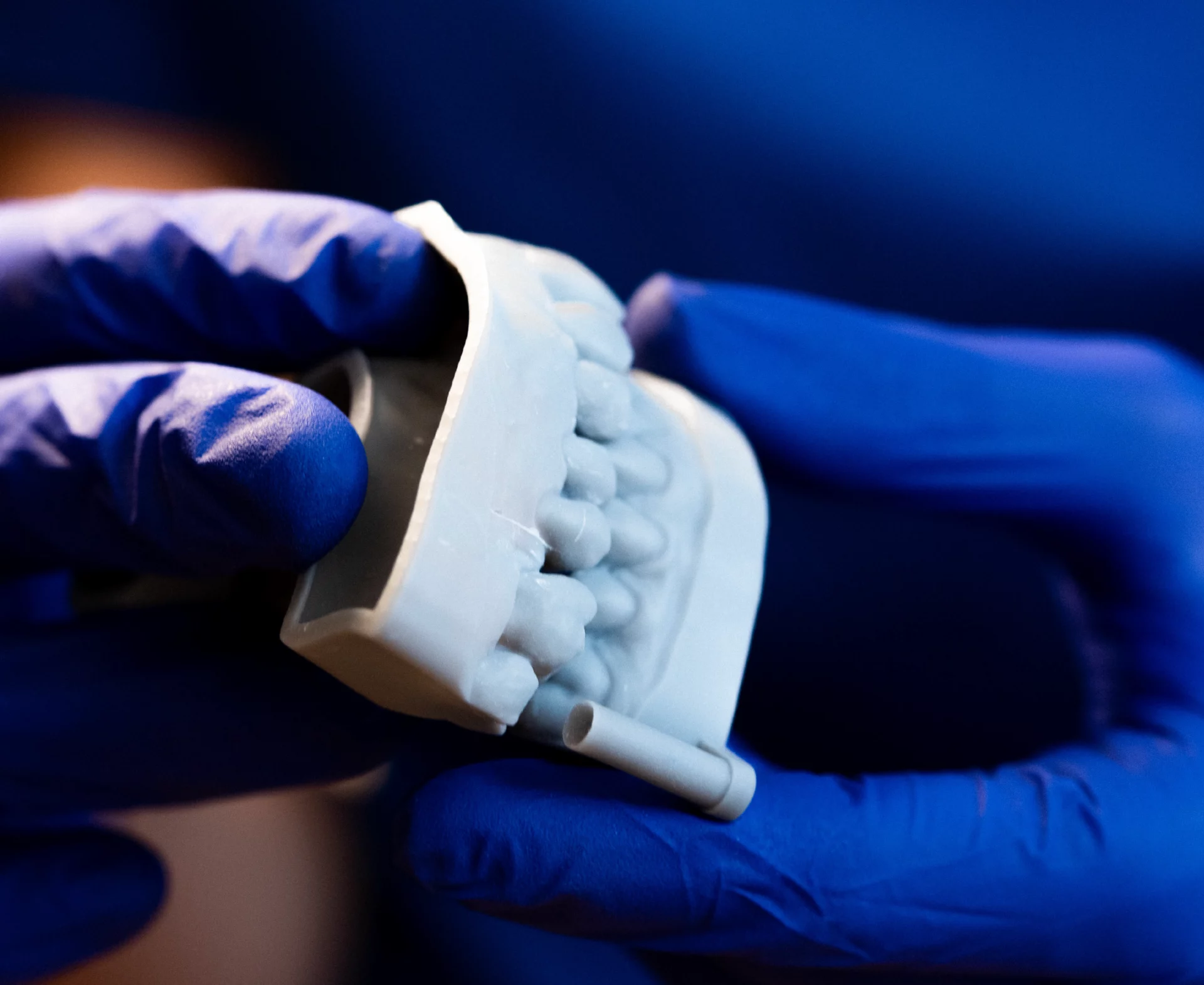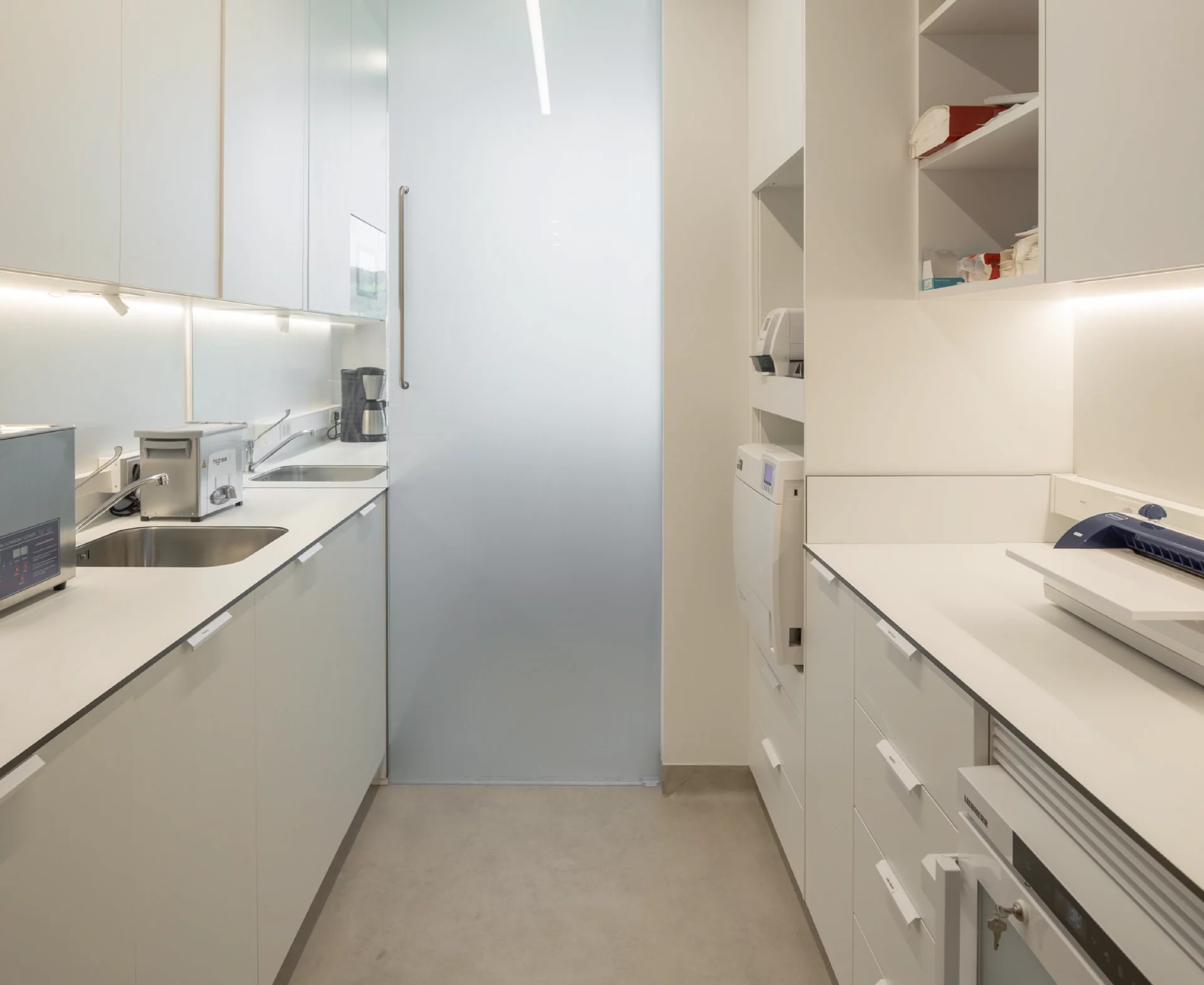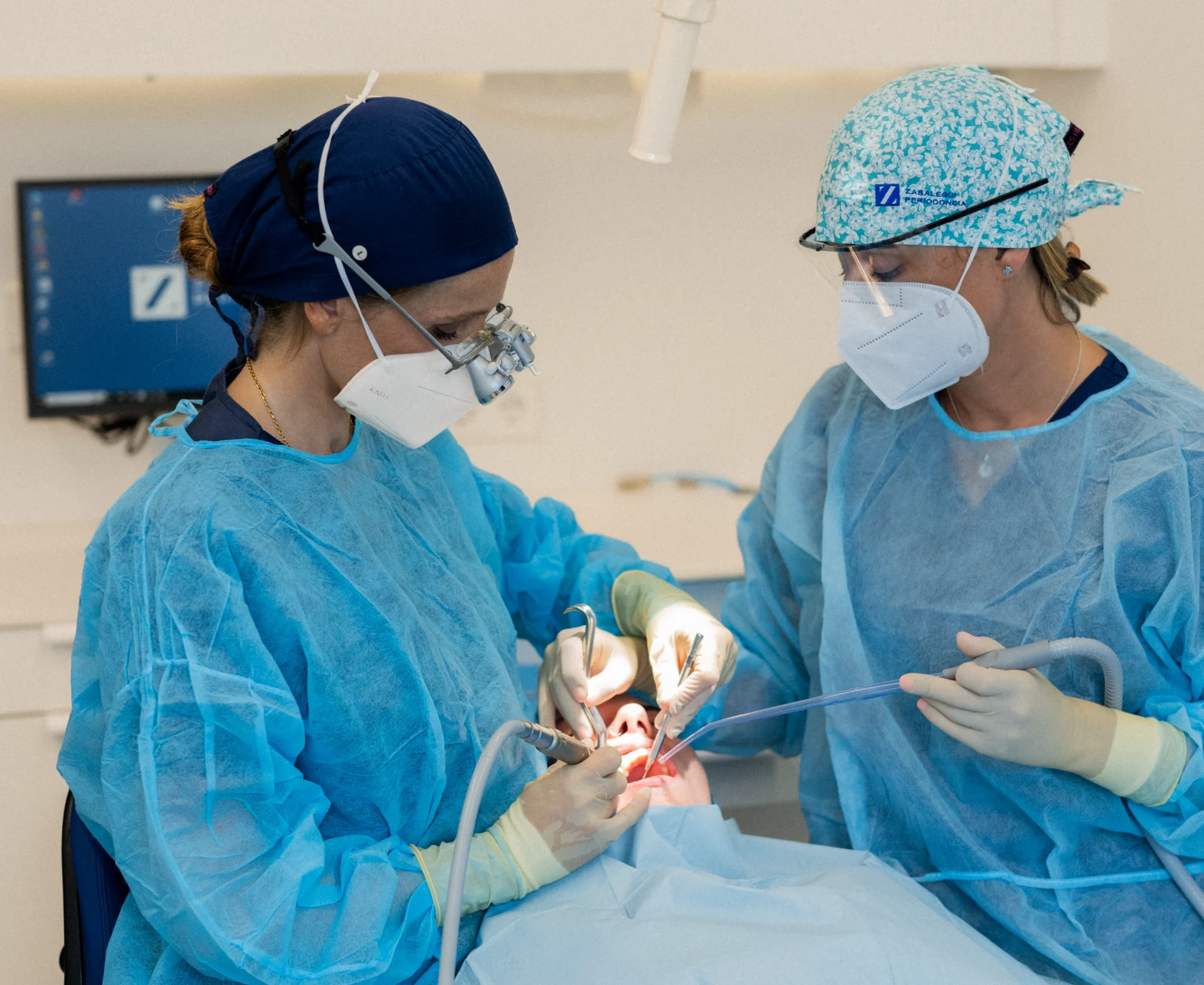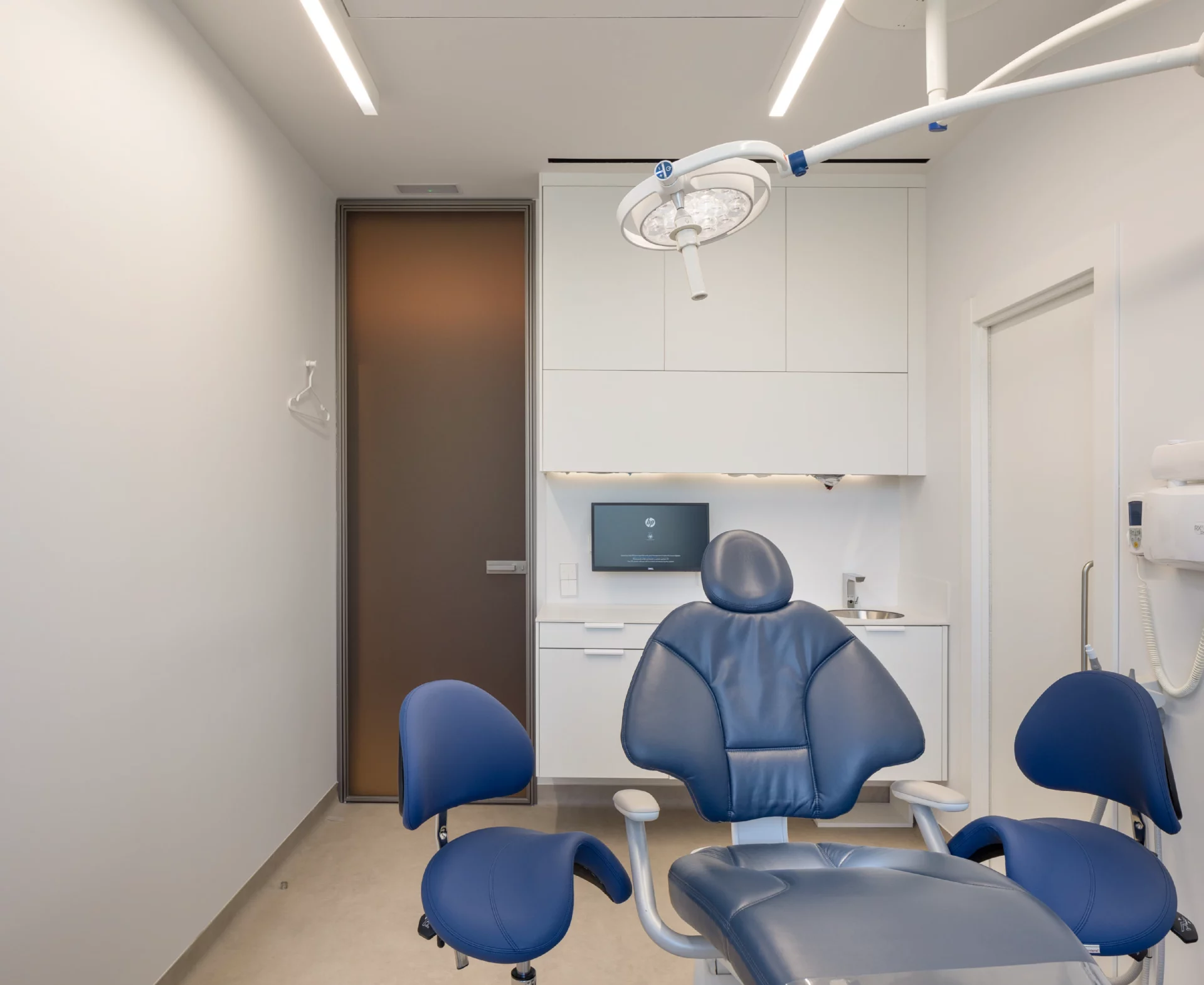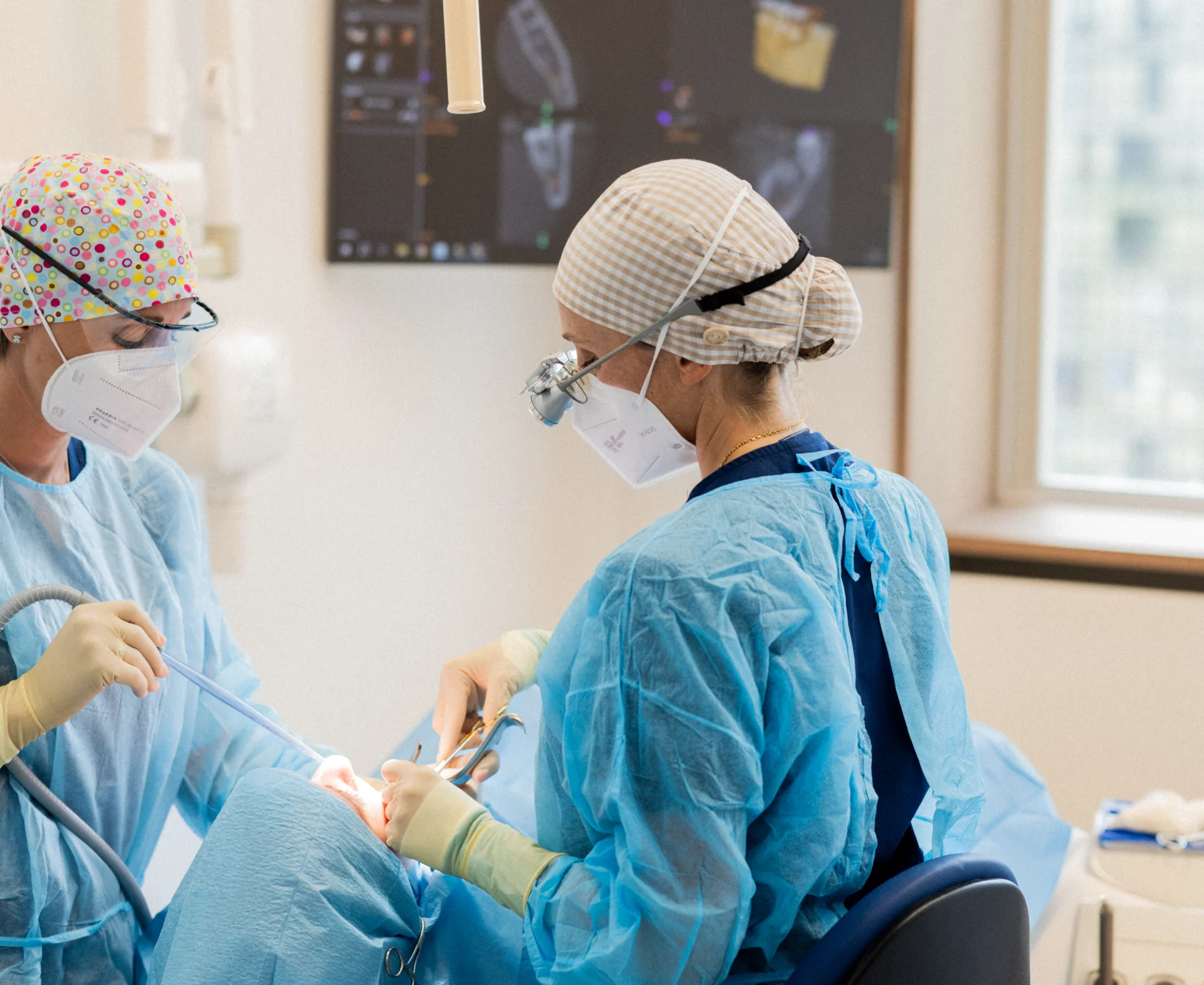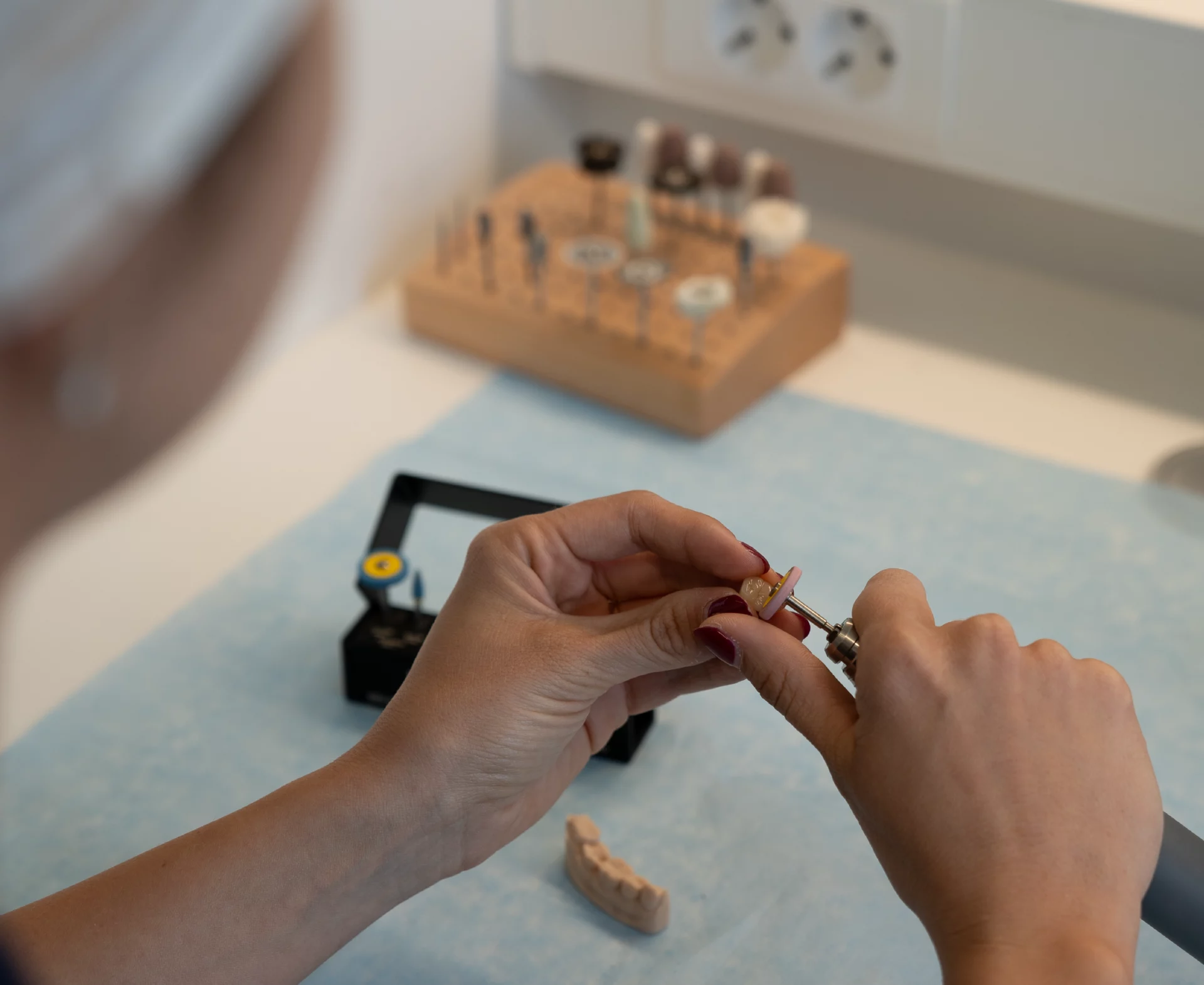Dental implants
Specialists in dental implants in Bilbao
Zabalegui Dental Clinic
Specialists in dental implants in Bilbao
Dental implants are artificial roots used to replace missing teeth. To place them, we use conventional local anaesthesia, thereby avoiding any discomfort. They can usually be inserted using ‘transmucosal’ protocols, without lifting the gum and therefore without the need for stitches, making the post-operative period painless and straightforward.
Dental implants are not teeth themselves; they must be restored by a specialised prosthodontist, who will place the teeth on the implants, either on the same day as the procedure (immediate loading protocol) when possible, or after the conventional integration period when indicated.
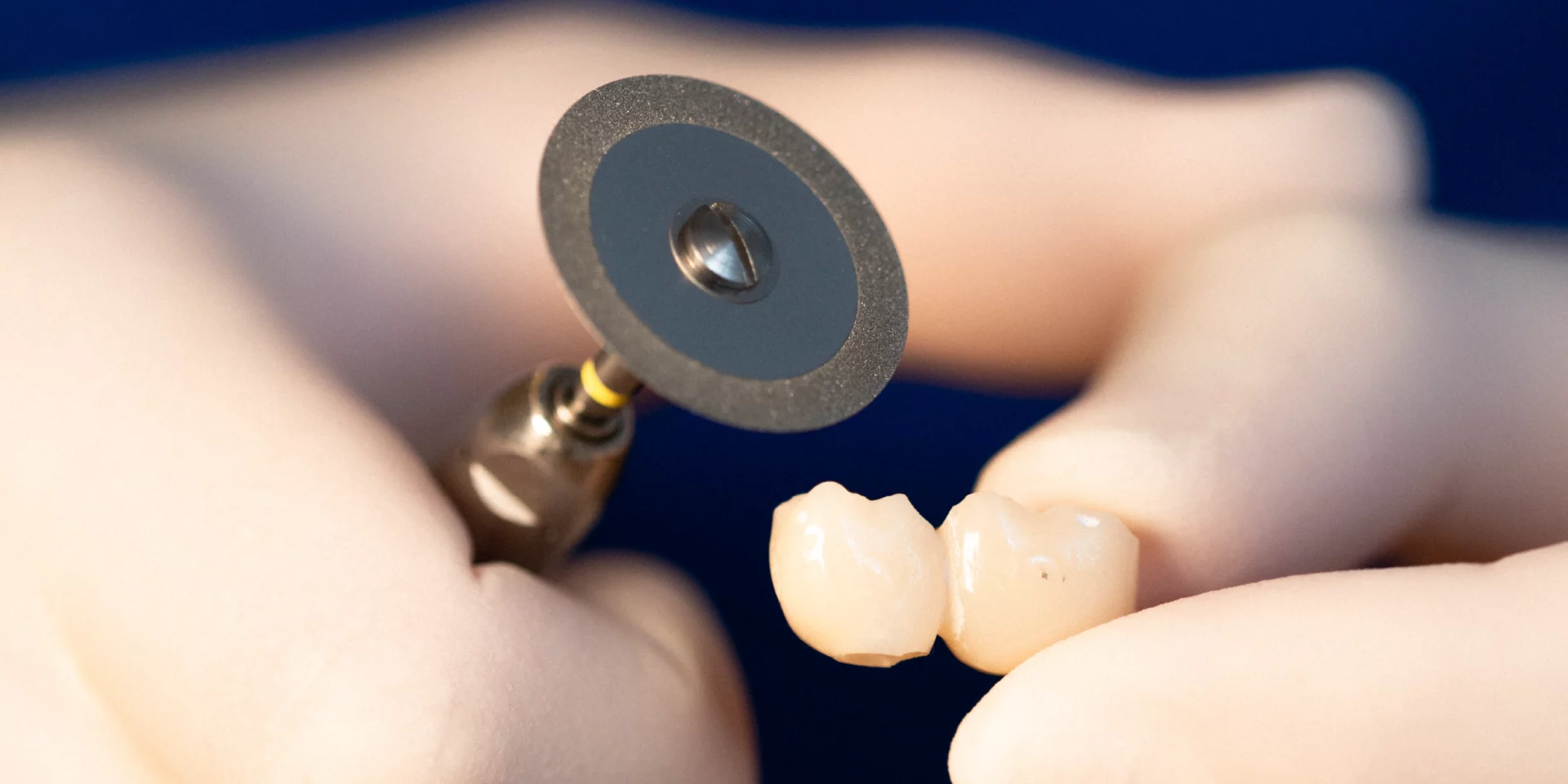
Single dental implant
When a tooth falls out or is lost, replacement with a single implant is one of the best alternatives, and although it may seem otherwise, it is the most conservative and least invasive option. It avoids sacrificing the healthy enamel of adjacent teeth to place a fixed prosthesis or ‘bridge’.
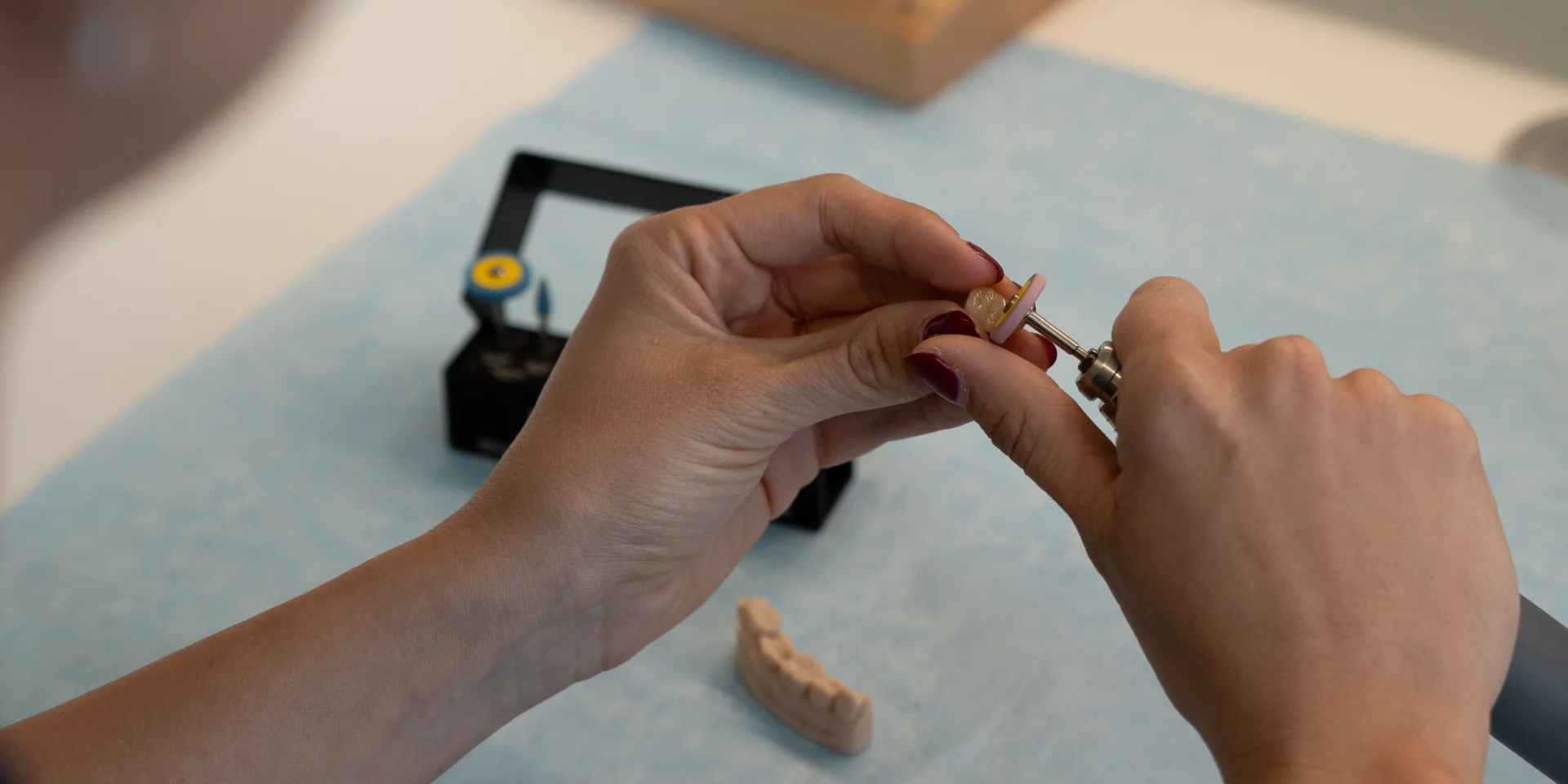
Immediate or delayed implants
The placement of an implant at the same time as tooth extraction is known as an ‘immediate’ implant. When this is not possible, the conventional or ‘delayed’ protocol is used, in which it is necessary to wait for the alveolar bone to heal after extraction, between 3 and 4 months. Immediate implants save time and costs in the treatment process, but they are not always indicated. Once again, the initial diagnosis is essential.
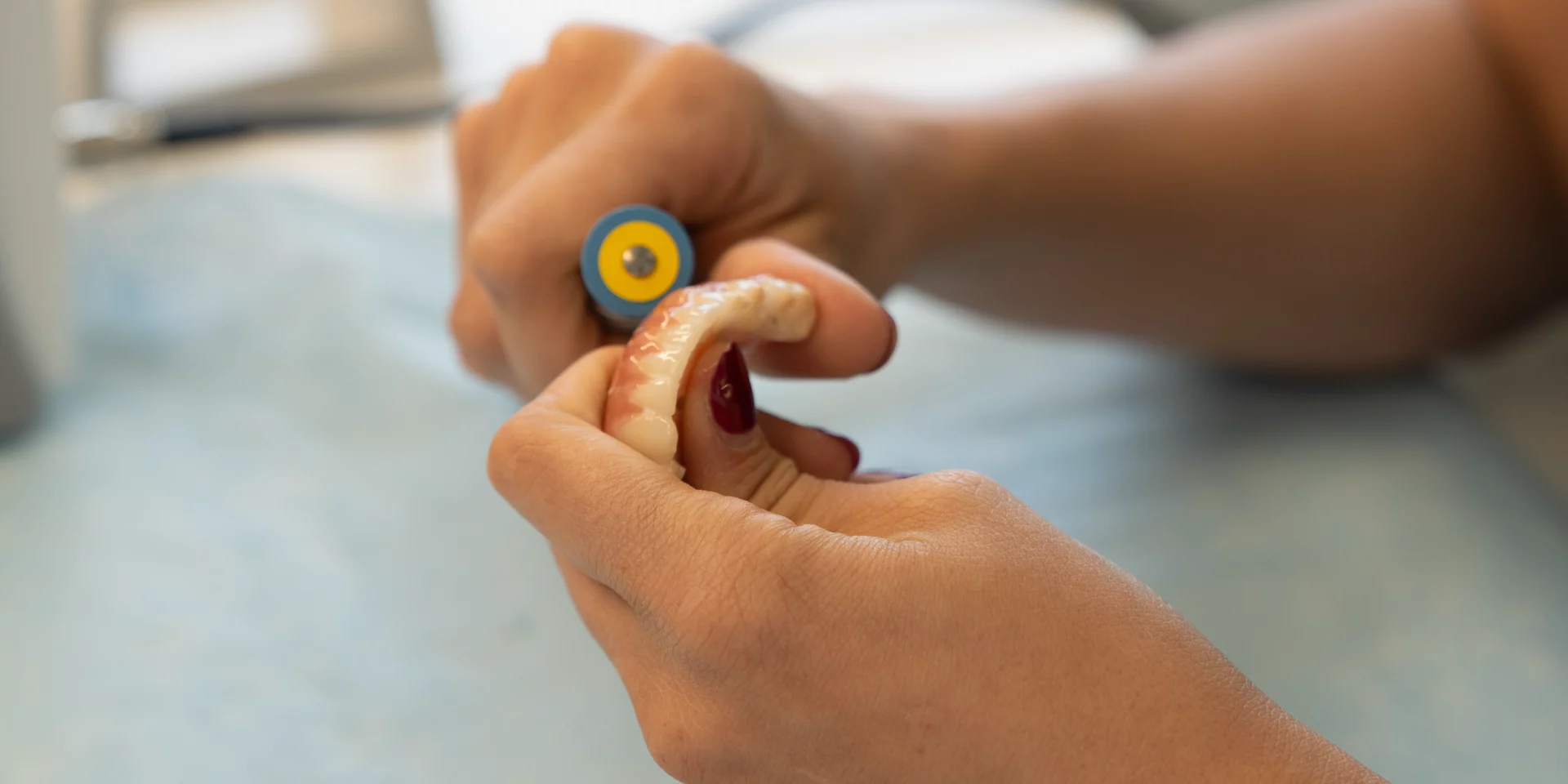
Immediate or deferred loading
Generally, you must wait a few months after the implant is placed before the tooth can be integrated. Immediate loading consists of placing fixed teeth on the implants within the first 24 hours after surgery.
How is a dental implant placed?
Dental implant placement process
Step 1: Study
To ensure that the patient is in good health, we will perform a study using 3D X-rays (CBCT) before the procedure.
Step 2: Surgical phase
On the day of the procedure, we will administer painkillers or anti-inflammatory medication to the patient and perform the surgery under optimal sterile conditions.
Step 3: Post-installation
Our patients do not usually need to take pain medication. Occasionally, they may take ibuprofen-type medication for 2 or 3 days.
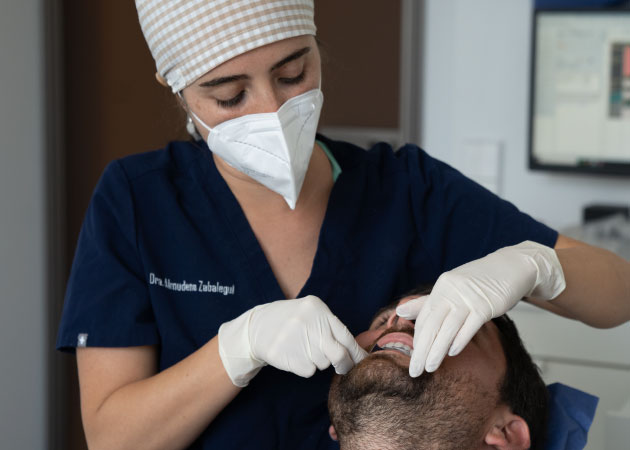
Do you need a dental implant specialist?
At Clínica Zabalegui, we have established ourselves as the leading clinic in Bilbao.

Specialised dentists
Zabalegui Methodology
Dental implants without surgery
It is a very commercial concept used by some centres to attract the attention of patients who lack information. It is associated with old protocols in which implants can be placed using ‘transmucosal’ protocols without raising the gum (using ‘flaps’). The term ‘no surgery’ can be misleading or suggest a ‘miracle’ because the placement of implants, in itself, is a surgical procedure. It would be more appropriate to call it Minimally Invasive Treatment, which we have been performing for decades in our dental implant treatment protocols.
Guided surgery
The term ‘guided surgery’ refers to the digital design (on a computer) of the tools (splints) that help to precisely position the implants in relation to the final prosthesis or teeth that will be placed in the patient’s mouth. The protocol consists of starting with the design of the final position of the teeth (Smile Design), which is scanned and converted into a file (.stl), and relating it to the radiographic diagnosis obtained through the 3D scanner (CBCT, files in dicom .dcm format). There are different protocols that help improve the accuracy of the placement of the temporary prosthesis.
Regenerative periodontal treatment
Advanced periodontal treatment consists of removing tartar deposits (calculus) adhered to the roots of the teeth under the gum line, and the deepest bacteria, with the aim of completely eradicating the infection. This is done by means of microsurgery, which aims to access the bottom of the infection under the gum line and create favourable conditions to facilitate adequate hygiene measures.
At our dental clinic in Bilbao, we have been performing regenerative periodontal treatment for over 35 years for patients with tooth damage caused by ‘bone loss or vertical or circumferential bone defects’. The aim of this treatment is to eradicate the infection, regenerate the destroyed bone and thereby improve the long-term prognosis or durability of the tooth. This treatment is also performed in some complex cases of dental implants by our team of periodontist specialists.
More info
Frequently asked questions from our patients about dental implants
What is a dental implant and how do I know if I need one?
Dental implants are artificial roots used to replace missing teeth. So, if you have lost one or more teeth, dental implants are the solution.
What process do you follow before placing a dental implant?
To ensure that your oral health is good, we will first conduct a study using 3D X-rays.
In which cases do you insert the tooth and prosthesis immediately, and in which cases is it better to wait?
When there is not enough bone for the implant to integrate properly into your mouth, it is necessary to wait between two and four months before placing it (deferred dental implants). If your bone is healthy, we can place the dental prosthesis immediately, within 24 hours of placing the implant. In addition, we can place a single implant or more than one.
What does the post-operative period for dental implants involve?
Thanks to the technique we use at our clinic, you are unlikely to experience much pain during the post-operative period. If you do experience any discomfort, we will prescribe a painkiller to relieve it.
How is a dental implant placed?
Before the procedure, we will administer local anaesthesia so that you do not feel any pain. In addition, we use a minimally invasive technique, which means that in many cases we can insert the implants without lifting the gum or using stitches, reducing the time you will have to spend in surgery and any post-operative discomfort.
Will you fit the implant and the dental prosthesis at the same time?
If possible, Dr Ion Zabalegui will place the tooth on the implant immediately, on the same day as the procedure. However, if he considers it necessary, and always taking your health into account, he may recommend placing it after two or three months.
What happens if I don't have enough bone for a dental implant?
We need to place the implants on a suitable bone base. If there is not enough bone, we will use the Guided Bone Regeneration technique, as it offers the possibility of increasing the bone base on which to place the dental implants in order to secure the new dentures. New digital planning technologies such as CAD-CAM-EXO and CAD allow for individualised bone regeneration through the creation of customised grafts adapted to each person’s specific deficiency. All of this allows us to reduce discomfort and treatment time and achieve excellent results with less effort.
How can implants be kept healthy once they have been fitted? (Preventive treatment)
The long-term prognosis for the successful functioning of dental implant treatment is related to the prevention of infections in the gums around the implants. For this reason, we will always place implants in a mouth with healthy gums. If they are not healthy, it is important to restore their health before beginning dental implant treatment. After placing the new dentures, it is essential to maintain good oral hygiene and visit the dentist at least twice a year. This reduces the risk of developing infections in the implants that can lead to bone loss (peri-implantitis) and reduced support around them.

